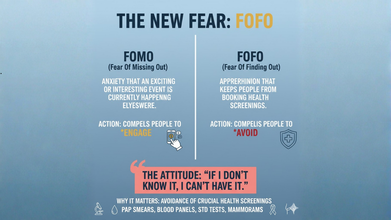- Health Conditions A-Z
- Health & Wellness
- Nutrition
- Fitness
- Health News
- Ayurveda
- Videos
- Medicine A-Z
- Parenting
Ophthalmologist Warns You Can Go Blind, If You Do Not Quit 'Smoking & Drinking'

Image Credit: Canva
Have you ever considered how your daily routines affect your vision? While we all link smoking and drinking to lung disease or liver damage, their impact on eye health is commonly disregarded. But these habits may be quietly stealing your vision.
Imagine this: You smoke a cigarette or have some cocktails after work, having no idea that the behaviors are speeding along the development of such conditions as cataracts, macular degeneration, and even blindness. Research indicates that smokers are four times more likely to have age-related macular degeneration (AMD), the most prevalent cause of vision loss. At the same time, excessive drinking removes vital nutrients that promote healthy eyes, causing blurry vision, optic nerve damage, and an increased risk of cataracts.
According to Dr. Ajay Sharma, top ophthalmologist, "The toxicants present in cigarette smoke have the potential to irreversibly damage sensitive eye tissues, and alcohol misuse speeds up vision loss in the long run.
The best news? Saving your eyesight begins with knowledge. Knowing how smoking and drinking affect your vision is the beginning of making better decisions. So go ahead, reach for that next drink or cigarette, and ask yourself: Is it worth risking your eyesight? Let's take a look at the true effect of these habits on your eyes.
We hear plenty about the ill effects of smoking and heavy drinking when it comes to heart disease, lung diseases, and liver disease. Their effects on the eyes, however, are much less talked about. Our eyes, just like all other organs, are prone to harm brought about by these bad habits. Smoking brings with it poisonous chemicals that damage crucial eye structures, and heavy drinking causes nutritional deficiencies and nerve damage, both of which have severe effects on the eyes.
Effects of Smoking on Eye Health
1. Risk of Blinding Eye Diseases
Smoking is a significant risk factor for several diseases that can lead to blindness, including:
Cataracts: Cigarette smoke releases toxic chemicals that speed up oxidative stress, which causes clouding of the lens of the eye. Research indicates that smokers are twice more likely to develop cataracts than non-smokers. Ophthalmologist Dr. Ajay Sharma says, "The harmful substances in cigarette smoke directly harm the lens, and there is a greater chance of cataract formation at an earlier age."
Age-Related Macular Degeneration (AMD): The macula, the retina's central region, which is used for clear vision, degenerates as a result of chronic smoking. Smokers are up to four times more likely than non-smokers to develop AMD, according to research. This condition progressively blurs central vision, making ordinary activities like reading and identifying faces more difficult by the day.
Glaucoma and Optic Nerve Damage: Smoking leads to high eye pressure, weakening the optic nerve and risking glaucoma. "The long-term eye effects of smoking are grave and irreversible, which is why quitting smoking as early as possible is very important," Dr. Sharma adds.
2. Dry Eye Syndrome and Increased Tear Reduction
Smoking interferes with tear production and quality, causing chronic dry eye syndrome. The symptoms are redness, irritation, and discomfort. The cigarette smoke exposure also increases inflammation, which makes it hard for the eyes to stay moist.
3. Diabetic Retinopathy Aggravation
For diabetics, smoking also aggravates diabetic retinopathy, a disease that destroys blood vessels in the eye. This will result in progressive visual impairment, further emphasizing why diabetics should eschew smoking.
Effects of Alcohol on Eye Health
1. Nutritional Deficiencies Leading to Vision Impairment
Long-term drinking drains vital vitamins and nutrients needed for eye health, especially:
Vitamin A Deficiency: Causes night blindness and dry eyes.
B-Complex Deficiency: Compromises optic nerve function, which raises the risk of vision loss.
Zinc Deficiency: Compromises retinal function, lowering clarity and contrast sensitivity.
Excessive alcohol consumption impairs the body's capacity to absorb these vital nutrients, hastening the loss of eye health.
2. Alcohol-Induced Optic Neuropathy
Alcohol abuse may lead to toxic optic neuropathy, which is a condition that involves blurred vision, impairment in color perception, and progressive vision loss. Chronic excessive drinking destroys the optic nerve over a period of time, causing permanent vision loss.
3. Transient and Permanent Blurred Vision
Whereas frequent drinking of alcohol may temporarily cause blurred vision through dehydration and insufficient oxygen flow to the eyes, long-term abuse of alcohol can result in sustained vision complications such as double vision and limited peripheral vision.
Yes, smoking and excessive drinking for many years can result in permanent vision loss. As Dr. Sharma points out, "Smokers are much more likely to get cataracts and age-related macular degeneration, both of which will result in permanent blindness if untreated."
Smoking-related eye disease symptoms are:
Cataracts: Dull vision, blurred color vision, and difficulty with vision in low light.
AMD: Altered or absent central vision, trouble reading, and trouble with identifying faces.
The initial phases of such conditions usually show no signs and symptoms, so frequent eye examinations are essential for early detection and treatment.
Stopping Smoking and Cutting Down Alcohol Consumption
The silver lining is that quitting smoking and cutting down on alcohol intake will substantially reduce the chances of eye-related ailments. Research indicates that people who quit smoking find their eye diseases to progress gradually. On the same note, having moderate alcohol intake and following a balanced diet can safeguard long-term eye health.
Important Steps to Safeguard Your Vision:
- Stop smoking to lower the chance of cataracts, AMD, and optic nerve damage.
- Restrict alcohol use to avoid optic neuropathy and preserve vital vitamins.
- Eat a balanced diet filled with vitamin A, B-complex vitamins, and antioxidants for healthy vision.
- Have regular eye exams to detect and treat vision issues early on.
Dr. Ajay Sharma, Ophthalmologist, Founder and Chief Medical Director of Eye-Q Eye Hospitals in India
Why COPD Is Now Affecting People in Their 20s and 30s

Credits: Canva
Chronic obstructive pulmonary disease (COPD) has long been seen as a condition of older adults, typically tied to years of smoking. But across India, pulmonologists are increasingly diagnosing it in people in their 20s and 30s. This shift, experts say, reflects a deeper and more troubling change: young adults are growing up and living in environments where the lungs never truly get a chance to breathe clean air.
A Shift From “Smoker’s Disease” to “Exposure Disease”
The biggest change is the cause itself. As Dr. Raja Dhar, Director & HOD, Pulmonology, CK Birla Hospitals, CMRI Kolkata, explains, “COPD is increasingly becoming an ‘exposure disease’ rather than a ‘smoker’s disease.’ In India, non-smoking COPD is numerically a much larger problem.”
This exposure begins early—sometimes in childhood.
Dr. Dhar highlights how even limited exposure can have lifelong consequences: “Severe airway obstruction can be traced back to just six to seven years of biomass smoke exposure in a poorly ventilated kitchen during a child’s formative years.”
Dr. Harshil Alwani, Consultant – Pulmonology, CK Birla Hospitals, Jaipur, also points to the changing risk profile. According to him, “newer epidemiological data show that non-smoking drivers—especially air pollution and occupational exposures—are playing a disproportionately large role in younger people.” He adds that rapid urbanisation means more young adults are chronically breathing polluted air from childhood onwards.
Improved diagnosis and greater awareness also mean younger patients with persistent symptoms are now being evaluated more often, he notes.
Beyond Smoking: The Real Culprits Behind Early COPD
Air Pollution
Both experts agree that polluted air is the biggest trigger today. Dr. Alwani explains that long-term exposure to PM₂.₅ is directly linked to lung decline and COPD. “Recent research shows that temperature and humidity modulate the harmful effect of PM₂.₅, making COPD risk worse under certain climatic conditions,” he says.
Dr. Dhar adds that India’s air quality is deteriorating nationwide: “Ambient outdoor air pollution is a severe risk, as air quality across 98% of India is worse than WHO standards.”
Indoor Pollution
Household pollution remains a massive issue. Biomass fuel used for cooking is, as Dr. Dhar puts it, “the largest non-smoking contributor, resulting in numbers approximately three times that of smoking-related COPD.”
Occupational Hazards
Young adults working in construction, mining, welding, or factory settings face daily exposure to dust, fumes, and chemicals. Dr. Alwani notes that such environments “carry a significantly increased risk.”
Childhood Lung Infections
Recurrent infections can impair lung development and reduce lung reserve, making early-onset disease more likely.
Genetic Factors
Conditions like alpha-1 antitrypsin deficiency, though rare, still contribute when combined with environmental triggers.
Delhi’s Winter Pollution: A Direct Route to Lung Damage
Every winter, Delhi’s smog becomes a health emergency. According to Dr. Dhar, “High winter pollution, particularly hazardous levels of PM2.5, acts as a chronic, low-grade chemical burn on the young respiratory system.”
Dr. Alwani adds that winter inversion traps pollutants closer to the ground, amplifying PM₂.₅’s damage.
The Vaping Problem
Vaping and e-cigarettes, widely perceived as harmless, have added a new layer of risk. Dr. Alwani warns, “Vaping is not benign. Its aerosols contain volatile compounds, heavy metals, and ultrafine particles that trigger inflammation and oxidative stress—central pathways to COPD.”
Dr. Dhar echoes this concern: “Any inhalation of heated chemical aerosols is a significant lung irritant and pro-inflammatory agent.”
Symptoms Young Adults Should Never Ignore
Doctors urge young adults not to dismiss symptoms like:
- Persistent cough
- Breathlessness during routine activity
- Wheezing or chest tightness
- Frequent colds or bronchitis
- Fatigue or reduced stamina
Why Early Diagnosis Matters
Early spirometry can dramatically change outcomes. As Dr. Dhar puts it, “Early intervention allows us to remove the source of exposure and start therapy, which can effectively preserve the patient’s remaining lung function.”
Dr. Alwani adds that catching the disease early can “significantly slow further lung damage” and prevent long-term complications.
FOFO (Not FOMO) Is The New Psychological Barrier That’s Fueling a Drop In Health Screenings

Credits: AI-generated
We all know the feeling of FOMO, the fear of missing out, but there exist another fear, this is FOFO: the fear of finding out. This apprehension is what keeps people from boking their health screenings. The horrors of what will happen after a mammogram, a Pap smear, an STD test, blood panel, or even something as simple as a blood pressure check can scare those with FOFO.
While the term itself is not a medical diagnosis, it is a widely recognized behavioral pattern that both patients and doctors get to see frequently. Over the years, it has gained more attention among experts who deal with health anxiety. As one clinical psychologist explains, there isn’t much published research on FOFO, but practitioners who work with health-related anxiety are very familiar with its impact.
What is even worrying is how common this avoidance has become. As per a 2025 survey of 2,000 employed US adults, 3 out 5 avoid medical screenings altogether, due to fear of bad news or embarrassment. Another 2025 reveal that of 7,000 adults, only 51% attended a routine medical appointment of cancer screening, with a 10% drop from 2024.
The attitude is: "If I don't know it, I can't have it".
Where Does FOFO Come From?
According to psychologists, FOFO often roots itself in anxiety and the desire for control. When something feels uncertain—like a health test result—many people instinctively avoid it. Avoidance becomes a way to quiet the anxiety, at least temporarily.
Experts say FOFO is especially common in people with generalized anxiety disorder, OCD, or illness anxiety disorder. But anyone can experience it. For some, it’s a one-off situation—like hesitating over a prostate exam. For others, it’s part of a broader coping style that involves avoiding anything that feels threatening. Ironically, this sometimes goes hand in hand with endlessly checking symptoms online.
Previous negative experiences in healthcare settings can also feed FOFO. Some people feel anxious around doctors or medical procedures, while others fear being judged, especially when a screening could uncover conditions that carry social stigma—such as STDs. There’s also the fear of receiving results that might force lifestyle changes or treatments they’re not ready for.
A common unspoken belief behind FOFO is:
“If I don’t take the test, then the problem doesn’t exist.”
Waiting for test results adds to the anxiety too. When results take days or weeks, the uncertainty can feel more stressful than the test itself.
How Can You Break The FOFO Cycle?
The first step is by acknowledging what is at stake. Many experts recommend weighing the pros and cons of taking the test versus avoiding it. If FOFO is holding you back, ask yourself what exactly you’re afraid of. Many people underestimate their ability to handle bad news. Understanding this can help reduce the emotional weight of screening.
It’s also helpful to reflect on a few important questions:
- Do I want fear to dictate my health choices?
- What could happen if I keep putting this off?
- A year from now, will I regret not acting today?
These questions often shift the focus from fear to long-term wellbeing. As psychologists note, facing the fear usually leads to decisions that better align with your values.
International Men's Day: Millions of Men May Be Living With Undetected Autoimmune Disorders, Know What They Are

Credits: Canva
On International Men's Day, we shift our focus on men's health and why is it important to talk about it. Time and again experts, doctors, and studies have shared how men generally visit GPs less than women. As per the NIH, US, the consultation rate is 32% lower in men than women. The difference is often attributed to a combination of women being more willing to admit sickness and seek help, while cultural factors and barriers for men keep them away from seeking help. However, not anymore, because both sexes require help when they need, especially when it is about their health.
Also Read: The Kessler Twins Die By Assisted Suicide in Germany; How It Differs From Euthanasia
As per a 2024 study published in the Journal of Clinical Investigation, about 5.7 million men could be living with an autoimmune disease that they do not even know about. The disease in men are often overlooked, all thanks to the social barriers.
Sex chromosomes play a key role in predisposing men or women to an autoimmune disease. Females have XX chromosomes, while male have XY chromosome and each chromosome carries gene sequence, which means specific pieces of DNA. Since X chromosome carries a bunch of gene related immunity,, having two of them could explain why women often have a higher rate of autoimmune diseases.
However, men are less likely to book time with their doctors, which could impact the discrepancies between sexes. They could thus often be undiagnosed or could flag their symptoms only when the disease has progressed.
Four Autoimmune Diseases Men Should Be Aware Of
Psoriasis
This is an inflammatory skin condition which affects both men and women. However, studies including the one published in 2023 in the International Journal of Women's Dermatology have suggested that men could develop this condition near their genitals and butt than women.
Also Read: Delhiites, Skip Your Morning Walk, You May Be Inhaling 3x Toxic Air Than Usual, According To Doctor
Ankylosing Spondylitis or AS
As happens due to the inflammation of the spine's joints and ligaments and could cause back pain and stiffness. While the condition is rare in itself, it could affect men more than women, that too at a younger age, usually below 40. A South Korean study from 2018, published in Scientific Reports, AS was 3.6 times more prevalent in men than women.
Type 1 Diabetes
The 2018 report by the Centers for Disease Control and Prevention, (CDC), US, provides data that type 1 diabetes may be slightly more in common in men than women. Though, other studies have been a mixed bag. Unlike type 2 diabetes, type 1 is an autoimmune disease, which means, here immune system attacks are specialized. What men should know is that both types of diabetes could up their risk of erectile dysfunction (ED) due to persistently high blood sugar, which could harm their nerves and blood vessels.
A 2016 study published in the International Journal of Impotence Research found that nearly 60% of 151 men being treated for type 1 diabetes had mild ED.
Inflammatory Bowel Disease (IBD)
The most common forms are Crohn's disease and ulcerative colitis, that take hold of digestive system. Chronic inflammation in the gut spikes the risk of colorectal cancer, which is one of the leading cause of death in men between 20 to 49 of ages. In fact, a 2023 study published in the journal Cancers noted that men with IBD faced a higher risk of developing colorectal cancer than women with IBD.
© 2024 Bennett, Coleman & Company Limited

